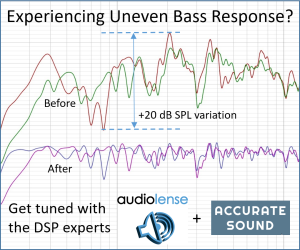Mike-48
Active Member
Is anyone here who's used recent versions of both Dirac and Anthem Room Correction (ARC) and who would care to compare them? I'm specifically interested in ease of use and quality of final results, especially when using multiple subwoofers.
I've been using ARC for several years on an Anthem STR preamp, and it has been easy to use. It has pretty good flexibility and has produced good results. At the same time, there have been a few cases where results have been inexplicable or inconsistent and a few where I wish I could tweak something that Anthem doesn't allow tweaking.
I've used Dirac in a much simpler system with a miniDSP SHD and found it more cumbersome to use, but with more flexibility than ARC for user tweaks. I understand that ease of use depends on the manufacturer, and that many Dirac implementations are easier to use than miniDSP's.
I can't compare the two DRC systems very well because the audio systems and rooms are so different, it would be pointless. And I can't take the miniDSP out of our TV system, even temporarily, or the rest of the family would kill me.
So I'll appreciate comments from those familiar with both.
I've been using ARC for several years on an Anthem STR preamp, and it has been easy to use. It has pretty good flexibility and has produced good results. At the same time, there have been a few cases where results have been inexplicable or inconsistent and a few where I wish I could tweak something that Anthem doesn't allow tweaking.
I've used Dirac in a much simpler system with a miniDSP SHD and found it more cumbersome to use, but with more flexibility than ARC for user tweaks. I understand that ease of use depends on the manufacturer, and that many Dirac implementations are easier to use than miniDSP's.
I can't compare the two DRC systems very well because the audio systems and rooms are so different, it would be pointless. And I can't take the miniDSP out of our TV system, even temporarily, or the rest of the family would kill me.
So I'll appreciate comments from those familiar with both.













